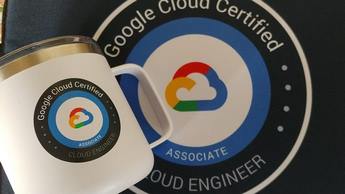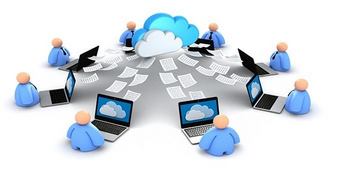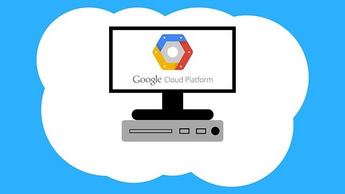
Professional Cloud Developer: Professional Cloud Developer
PDFs and exam guides are not so efficient, right? Prepare for your Google examination with our training course. The Professional Cloud Developer course contains a complete batch of videos that will provide you with profound and thorough knowledge related to Google certification exam. Pass the Google Professional Cloud Developer test with flying colors.

Curriculum for Professional Cloud Developer Certification Video Course
| Name of Video | Time |
|---|---|
 1. What is a GCP Professional Cloud Developer? |
3:00 |
 2. Cloud Developer Exam Objectives |
5:00 |
 3. Cloud Developer Deep Dive Notes |
2:00 |
 4. Course Setup |
2:00 |
| Name of Video | Time |
|---|---|
 1. Course Material Download |
2:00 |
 2. What are Test Tips? |
2:00 |
 3. Whiteboards and Demos |
1:00 |
 4. Sign up for Free Tier or Credits if available |
2:00 |
 5. GCP Pricing Calculator |
3:00 |
 6. SDK Install |
10:00 |
 7. Read the GCP Cloud Developer Deep Dive Notes. |
2:00 |
| Name of Video | Time |
|---|---|
 1. Google Cloud Intro (Condensed Version) |
8:00 |
 2. GCP Hierarchy |
9:00 |
 3. Whiteboard GCP Hierarchy |
6:00 |
 4. Demo - Projects |
5:00 |
 5. Compute Options |
4:00 |
| Name of Video | Time |
|---|---|
 1. Compute Engine |
14:00 |
 2. Compute Engine Demo |
8:00 |
 3. Instance Groups |
2:00 |
 4. Instance Groups Demo |
10:00 |
| Name of Video | Time |
|---|---|
 1. App Engine Security Scanner |
6:00 |
 2. App Engine Demo |
9:00 |
 3. App Engine or Kubernetes Engine |
8:00 |
| Name of Video | Time |
|---|---|
 1. Kubernetes Engine |
9:00 |
 2. Demo- Kubernetes Engine |
6:00 |
 3. Whiteboard - Kubernetes |
10:00 |
| Name of Video | Time |
|---|---|
 1. Cloud Functions Basics |
7:00 |
 2. Cloud Functions Demo |
4:00 |
| Name of Video | Time |
|---|---|
 1. Data Storage Basics |
12:00 |
 2. Cloud Storage Basics |
10:00 |
 3. Cloud Storage |
16:00 |
 4. Cloud Storage Demo Part2 |
13:00 |
| Name of Video | Time |
|---|---|
 1. Networking Overview |
10:00 |
 2. VPC Overview |
11:00 |
 3. IP Addressing |
3:00 |
 4. Networking Whiteboard |
11:00 |
 5. Networking Demo |
4:00 |
 6. VPC Whiteboard |
5:00 |
 7. Hybrid Connectivity Networking Whiteboard |
6:00 |
| Name of Video | Time |
|---|---|
 1. Download SDK |
10:00 |
 2. Devops on GCP Part 1 |
17:00 |
 3. Devops on GCP Part 2 |
6:00 |
 4. Cloud Source Repositories Demo |
9:00 |
 5. Cloud Build Demo |
5:00 |
 6. Demo Gcloud Commands |
3:00 |
| Name of Video | Time |
|---|---|
 1. Section 1 Coverage |
2:00 |
 2. 1.1 Designing performant applications and APIs |
1:00 |
 3. Infrastructure as a Service vs. Container as a Service vs. Platform as a Service |
3:00 |
 4. Portability vs. platform-specific design |
4:00 |
 5. Evaluating System Considerations |
7:00 |
 6. Operating system versions and base runtimes of services |
3:00 |
 7. Service Locality |
3:00 |
 8. Whiteboard Service Locality |
6:00 |
 9. Locality Test Tips |
3:00 |
 10. Microservices |
3:00 |
 11. Whiteboard- Microservices |
5:00 |
 12. Testips - Microservices |
1:00 |
 13. Defining a key structure for high write applications using Cloud Storage, Cloud |
7:00 |
 14. Defining a key structure Test Tips |
1:00 |
 15. Session management |
5:00 |
 16. Test Tips Session Management |
2:00 |
 17. Loosely coupled applications using asynchronous Cloud Pub/Sub events |
3:00 |
 18. Demo Pub Sub |
3:00 |
 19. Test Tips Cloud Pub Sub |
1:00 |
 20. Deploying and securing an API with cloud endpoints |
11:00 |
 21. Demo Cloud Endpoints |
4:00 |
 22. Test Tips -API Management |
2:00 |
 23. Health checks |
4:00 |
 24. TestTips Healthchecks |
1:00 |
 25. Google-recommended practices and documentation |
5:00 |
 26. 1.2 Designing secure applications |
1:00 |
 27. Applicable regulatory requirements and legislation |
4:00 |
 28. TestTips Regulatory Requirements |
1:00 |
 29. Security mechanisms that protect services and resources |
6:00 |
 30. TestTips Security Mechanisms |
1:00 |
 31. Storing and rotating secrets |
12:00 |
 32. Secrets Whiteboard |
6:00 |
 33. TestTips Secrets |
3:00 |
 34. IAM roles for users/groups/service accounts |
9:00 |
 35. IAM Whiteboard |
2:00 |
 36. TestTips IAM |
3:00 |
 37. HTTPs certificates |
1:00 |
 38. Test Tips Https Certificates |
1:00 |
 39. Demo Https Certificates |
2:00 |
 40. Google-recommended practices and documentation |
2:00 |
 41. Defining database schemas for Google-managed databases |
7:00 |
 42. Session Management |
5:00 |
 43. TestTips Session Management |
2:00 |
 44. Loosely Coupled Apps – Cloud Pub/Sub |
3:00 |
 45. Demo - Loosely Coupled Apps – Cloud Pub/Sub |
3:00 |
 46. Whiteboard - Cloud Pub/Sub |
5:00 |
 47. TestTips Loosely Coupled Apps – Cloud Pub/Sub |
1:00 |
 48. Deploying and securing an API with cloud endpoints |
11:00 |
 49. Demo Deploying and securing an API with cloud endpoints |
4:00 |
 50. TesTips Deploying and securing an API with cloud endpoints |
2:00 |
 51. TestTips Health Checks |
4:00 |
 52. Health Checks |
4:00 |
 53. Choosing data storage options based on use case considerations |
6:00 |
 54. TestTips Data Storage |
1:00 |
 55. Working with data ingestion systems |
9:00 |
 56. Following Google-recommended practices and documentation |
5:00 |
 57. Using managed services |
4:00 |
 58. Using the strangler pattern for migration |
3:00 |
 59. Strangler Whiteboard |
5:00 |
 60. Codelabs - Exercise for Practice- Cloud Functions |
2:00 |
 61. Codelabs - Cloud Pub/sub |
1:00 |
 62. Google-recommended practices and documentation |
5:00 |
 63. Section Review Questions |
8:00 |
| Name of Video | Time |
|---|---|
 1. Section 2 Building and Testing Applications |
2:00 |
 2. Local application development emulations |
1:00 |
 3. Developer Tools and SDK |
4:00 |
 4. Demo SDK Install and basic commands |
13:00 |
 5. Demo SDK Emulators |
6:00 |
 6. Demo CLI Create Project |
9:00 |
 7. 2.2 Building a continuous integration pipeline |
1:00 |
 8. Creating a Cloud Source Repository and committing code to it |
8:00 |
 9. DevOps and Pipelines |
10:00 |
 10. Developing unit tests for all code written |
7:00 |
 11. Developing an integration pipeline using services |
4:00 |
 12. Reviewing test results of continuous integration pipeline |
1:00 |
 13. TestTips |
2:00 |
 14. Whiteboard - DevOps |
5:00 |
 15. 2.3 Testing. Considerations include: |
1:00 |
 16. Performance Testing |
9:00 |
 17. Whiteboard Testing |
9:00 |
 18. TestTips Testing |
3:00 |
 19. Algorithm design |
1:00 |
 20. Modern application patterns |
2:00 |
 21. Efficiency |
4:00 |
 22. TestTips |
2:00 |
 23. Section Review Questions |
9:00 |
| Name of Video | Time |
|---|---|
 1. Section 3 |
3:00 |
 2. 3.1 Implementing appropriate deployment strategies based on the target compute |
1:00 |
 3. Blue Green Deployments |
6:00 |
 4. Whiteboard App Engine |
8:00 |
 5. Demo App Engine |
3:00 |
 6. 3.2 Deploying applications and services on Compute Engine |
1:00 |
 7. Launching a compute instance using GCP Console and Cloud SDK |
8:00 |
 8. Moving a persistent disk to different VM |
6:00 |
 9. Creating an autoscaled managed instance group using an instance template |
11:00 |
 10. Generating/uploading a custom SSH key for instances |
4:00 |
 11. Configuring a VM for Stackdriver monitoring and logging |
5:00 |
 12. Creating an instance with a startup script that installs software |
3:00 |
 13. Creating custom metadata tags |
5:00 |
 14. Creating a load balancer for Compute Engine instances |
10:00 |
 15. 3.3 Deploying applications and services on Google Kubernetes Engine |
1:00 |
 16. Deploying a GKE cluster |
4:00 |
 17. Kubenetes Engine Whiteboard |
10:00 |
 18. Kubenetes Engine Clusters Demo |
18:00 |
 19. TestTips |
2:00 |
 20. 3.4 Deploying an application to App Engine. Considerations include: |
1:00 |
 21. Scaling configuration |
10:00 |
 22. GKE or App Engine |
8:00 |
 23. TestTips App Engine |
3:00 |
 24. Cloud Functions that are triggered via an event |
5:00 |
 25. Cloud Functions that are invoked via HTTP |
2:00 |
 26. 3.6 Creating data storage resources. Tasks include: |
1:00 |
 27. Creating a Cloud SQL instance |
4:00 |
 28. Cloud Datastore |
13:00 |
 29. Creating BigQuery datasets |
3:00 |
 30. Creating a Cloud Storage bucket |
7:00 |
 31. Creating a Cloud Pub/Sub topic |
5:00 |
 32. TestTips Create data storage |
1:00 |
 33. 3.7 Deploying and implementing networking resources. Tasks include: Creating an |
1:00 |
 34. Creating an auto mode VPC with subnets |
4:00 |
 35. Setting up a domain using Cloud DNS |
4:00 |
 36. TestTips Networking |
3:00 |
 37. 3.8 Automating resource provisioning with Deployment Manager |
1:00 |
 38. Deployment Manager |
2:00 |
 39. Deployment Manager Demo |
7:00 |
 40. TestTips |
1:00 |
 41. 3.9 Managing Service accounts. Tasks include: Creating a service account with a |
1:00 |
 42. Service Accounts |
4:00 |
 43. Save KeyFile |
3:00 |
 44. Codelabs |
1:00 |
 45. TestTips |
1:00 |
| Name of Video | Time |
|---|---|
 1. Section 4 Overview |
1:00 |
 2. Enable Bigquery and permissions on dataset |
11:00 |
 3. SQL Searches/Selects |
4:00 |
 4. Whiteboard- Fetching Ingesting data |
4:00 |
 5. Codelab -Biquery |
1:00 |
 6. BigTable or BigQuery |
2:00 |
 7. Writing an SQL query to retrieve data from relational databases |
9:00 |
 8. Connecting to SQL |
3:00 |
 9. Gsutil Storing and retrieving objects from Google Storage |
4:00 |
 10. Quickstart - Cloud Storage GsUtil |
1:00 |
 11. Connecting to a Cloud SQL instance |
3:00 |
 12. Enabling Cloud Spanner and configuring an instance |
8:00 |
 13. Cloud Spanner Whitepaper |
1:00 |
 14. Demo -Cloud Spanner |
16:00 |
 15. Cloud Spanner Best Practices |
5:00 |
 16. DataProc or Dataflow |
1:00 |
 17. TestTips |
4:00 |
 18. Configuring a Cloud Pub/Sub push subscription to call an endpoint |
5:00 |
 19. Data Ingestion Sources |
3:00 |
 20. 4.2 Integrating an application with compute services. Tasks include: |
1:00 |
 21. Provisioning and configuring networks |
11:00 |
 22. Writing an application that publishes/consumes from Cloud Pub/Sub |
5:00 |
 23. Authenticating users by using Oauth2 Web Flow and Identity Aware Proxy |
7:00 |
 24. Reading instance metadata to obtain application configuration |
4:00 |
 25. TestTips Oath |
2:00 |
 26. 4.3 Integrating Google Cloud APIs with applications. Tasks include: |
1:00 |
 27. Enable API |
16:00 |
 28. Using Pre Trained ML APIS |
6:00 |
 29. Using service accounts to make Google API calls |
3:00 |
 30. Using APIs Calls |
1:00 |
 31. Making API calls |
8:00 |
 32. Using the Cloud SDK to perform Basic Tasks |
8:00 |
 33. DLP API |
9:00 |
 34. TestTips |
1:00 |
 35. Section Review Questions |
5:00 |
| Name of Video | Time |
|---|---|
 1. Objectives 5.1 Installing Monitoring and Logging |
1:00 |
 2. Install Stackdriver Monitoring Agent |
1:00 |
 3. Objectives 5.2 |
1:00 |
 4. Debugging a VM image with serial port |
6:00 |
 5. Using the CLI tools |
6:00 |
 6. Analyzing a failed VM instance |
1:00 |
 7. Sending Logs from a VM |
6:00 |
 8. TestTips |
1:00 |
 9. Objectives 5.3 |
1:00 |
 10. Monitoring Dashboard and Views |
1:00 |
 11. Create Monitoring Dashboard Stackdriver |
7:00 |
 12. Viewing Logs In Console |
6:00 |
 13. Viewing Syslogs from a VM |
4:00 |
 14. Streaming Logs |
5:00 |
 15. Creating Logging Sinks |
6:00 |
 16. Create Custom Metrics |
5:00 |
 17. Graphing Metrics |
7:00 |
 18. Using Stackdriver Debugger |
8:00 |
 19. Review Stack Traces |
8:00 |
 20. TestTips |
4:00 |
 21. Objectives 5.4 |
1:00 |
 22. Setting Up time checks and basic alerts |
6:00 |
 23. Troubleshooting Network Issues |
11:00 |
 24. API Debbugging |
5:00 |
 25. Codelab Networking For Developers |
2:00 |
 26. Review App Performance Stackdriver |
11:00 |
 27. Troubleshooting Image and OS |
10:00 |
 28. Docs and Support |
4:00 |
 29. TestTips |
1:00 |
 30. Section Review Questions |
4:00 |
| Name of Video | Time |
|---|---|
 1. Case Study Overview |
4:00 |
 2. Case Study Sample Questions |
4:00 |
 3. TestTips |
3:00 |
| Name of Video | Time |
|---|---|
 1. Pricing Calculator |
3:00 |
 2. Qwiklabs |
5:00 |
 3. Codelabs Free to Use |
4:00 |
 4. Stackoverflow |
4:00 |
 5. Project Treehouse |
1:00 |
 6. GCP Pricing Calculator |
7:00 |
 7. GCP Stencils and Icons |
4:00 |
 8. Gcping |
2:00 |
Google Professional Cloud Developer Exam Dumps, Practice Test Questions
100% Latest & Updated Google Professional Cloud Developer Practice Test Questions, Exam Dumps & Verified Answers!
30 Days Free Updates, Instant Download!
Professional Cloud Developer Premium Bundle

- Premium File: 379 Questions & Answers. Last update: Jan 4, 2026
- Training Course: 253 Video Lectures
- Study Guide: 498 Pages
- Latest Questions
- 100% Accurate Answers
- Fast Exam Updates
Google Professional Cloud Developer Training Course
Want verified and proven knowledge for Professional Cloud Developer? Believe it's easy when you have ExamSnap's Professional Cloud Developer certification video training course by your side which along with our Google Professional Cloud Developer Exam Dumps & Practice Test questions provide a complete solution to pass your exam Read More.
Master Google Cloud: Complete Professional Cloud Developer Training Guide
Master cloud application development principles and pass the Google Cloud Developer exam on your first attempt.
Course Overview
The Google Professional Cloud Developer training course is designed to provide aspiring cloud developers with the skills, knowledge, and hands-on experience required to build scalable, secure, and high-performance applications on Google Cloud Platform. This course serves as a comprehensive guide for those preparing for the Professional Cloud Developer certification while also equipping participants with the practical skills needed to develop cloud-native solutions in real-world scenarios.
Cloud computing has become a cornerstone of modern software development, enabling organizations to deploy applications globally, manage resources efficiently, and scale operations dynamically. In this course, learners will explore the full spectrum of Google Cloud services, understand best practices for cloud application development, and gain insights into deployment strategies, monitoring, and security.
The course emphasizes a hands-on approach, allowing participants to work directly with GCP services such as App Engine, Cloud Functions, Cloud Run, Cloud Storage, and Cloud SQL. By engaging in practical labs and exercises, learners will develop the confidence to design, implement, and manage cloud solutions that meet industry standards and performance expectations.
Through detailed modules, participants will also learn how to optimize application performance, implement continuous integration and deployment pipelines, and integrate cloud-based services into their development workflows. The training provides both conceptual understanding and practical expertise, making it suitable for developers aiming to advance their careers in cloud computing and earn the Professional Cloud Developer certification.
What You Will Learn From This Course
Participants will gain a deep understanding of Google Cloud Platform and develop the skills necessary to design, build, and deploy cloud applications. By the end of the course, learners will be able to:
Navigate and utilize core GCP services for cloud application development, including App Engine, Cloud Functions, Cloud Run, Cloud Storage, and Cloud SQL
Design scalable, reliable, and secure cloud-native applications
Implement microservices architecture and serverless solutions using GCP services
Develop cloud applications that integrate with APIs, databases, messaging systems, and storage solutions
Configure monitoring, logging, and error reporting to ensure application reliability
Apply best practices for identity and access management to secure cloud deployments
Build continuous integration and continuous deployment pipelines using GCP tools
Optimize cloud applications for performance, cost efficiency, and resource management
Prepare for the Professional Cloud Developer certification exam with practical scenarios and sample questions
Understand hybrid and multi-cloud strategies for advanced deployment architectures
The course offers an immersive experience, blending theoretical knowledge with hands-on labs and real-world exercises. Each learning objective is carefully designed to align with the skills required by professional cloud developers, ensuring participants gain both the technical proficiency and confidence needed to excel in cloud development roles.
Learning Objectives
The learning objectives of this course are structured to provide a clear roadmap for mastering Google Cloud Platform and cloud application development. By the end of the training, participants should be able to:
Identify and explain the fundamental concepts of cloud computing, including Infrastructure as a Service, Platform as a Service, and Software as a Service
Understand and leverage key GCP services for building, deploying, and managing cloud applications
Design cloud-native applications with scalability, reliability, and security in mind
Implement microservices and serverless architectures using GCP tools and services
Integrate cloud applications with databases, messaging systems, and APIs for efficient communication and data processing
Configure automated deployment pipelines using Cloud Build, Cloud Deploy, and related CI/CD tools
Apply monitoring, logging, and alerting techniques to ensure application performance and availability
Secure cloud applications using Identity and Access Management, service accounts, and encryption strategies
Optimize cloud solutions for cost efficiency, performance, and operational excellence
Prepare effectively for the Professional Cloud Developer certification exam by practicing with sample projects and test scenarios
These objectives are designed not only to prepare learners for the certification exam but also to equip them with practical skills applicable in professional environments. By mastering these objectives, participants can confidently design and deploy cloud solutions that meet the demands of modern enterprises.
Requirements
This course is designed to accommodate learners with a range of technical backgrounds. However, a basic understanding of programming and cloud computing concepts is recommended to maximize the learning experience. The course requirements include:
Familiarity with programming languages such as Python, Java, Node.js, or Go
Understanding of software development principles, including object-oriented programming and version control
Basic knowledge of cloud computing concepts, including compute, storage, and networking
Access to a Google Cloud Platform account for completing hands-on labs and exercises
A willingness to engage in practical exercises and apply theoretical knowledge to real-world scenarios
Familiarity with command-line tools and basic terminal commands for development and deployment tasks
While prior experience with Google Cloud Platform is not mandatory, learners with exposure to cloud services or previous development experience will find it easier to grasp advanced concepts and complete practical labs more efficiently.
Course Description
The Google Professional Cloud Developer training course provides a structured, in-depth learning experience for software developers, engineers, and IT professionals seeking to enhance their cloud computing skills. The course emphasizes practical, hands-on learning, combining theoretical foundations with real-world exercises that replicate common industry scenarios.
Participants will start by exploring the fundamentals of Google Cloud Platform, gaining familiarity with core services such as App Engine, Cloud Functions, Cloud Run, Cloud Storage, and Cloud SQL. The course gradually progresses to advanced topics, including microservices architecture, serverless development, CI/CD pipelines, cloud security, and performance optimization.
One of the key strengths of this course is its focus on practical labs and exercises. Each module includes interactive sessions that allow learners to deploy applications, configure monitoring and logging, implement security best practices, and optimize cloud deployments. By completing these exercises, participants gain not only technical knowledge but also practical experience that mirrors real-world cloud development challenges.
The course also provides guidance on preparing for the Professional Cloud Developer certification exam, including detailed explanations of exam domains, objectives, and question formats. Participants will engage with sample questions and scenarios that help reinforce learning and build confidence for the certification process.
Throughout the course, learners will also explore cloud solution design patterns, best practices for scalable application development, and strategies for cost-efficient and performance-optimized deployments. By integrating these concepts, participants will be able to design and implement cloud applications that meet modern enterprise requirements.
Target Audience
This course is ideal for a variety of learners, including:
Software developers seeking to expand their skill set to cloud application development
IT professionals looking to specialize in cloud technologies and GCP services
DevOps engineers aiming to implement CI/CD pipelines and automate cloud deployments
System architects and solution designers interested in building scalable, secure, and cost-efficient cloud applications
Students or professionals preparing for the Professional Cloud Developer certification exam
Anyone interested in learning practical skills for designing, deploying, and managing applications on Google Cloud Platform
The course is designed to cater to both beginners and experienced developers, with a learning path that gradually builds from foundational concepts to advanced cloud application development strategies. By the end of the course, participants will be equipped to design, implement, and manage robust cloud solutions that align with industry best practices.
Prerequisites
To ensure a smooth learning experience and maximize the value of this course, participants should meet the following prerequisites:
Basic programming knowledge in languages such as Python, Java, Node.js, or Go
Familiarity with object-oriented programming and software development concepts
Understanding of fundamental cloud computing concepts, including compute, storage, networking, and cloud service models
Access to a Google Cloud Platform account for completing hands-on exercises and labs
Basic knowledge of using command-line interfaces for development and deployment tasks
Willingness to engage in hands-on labs and practical exercises to reinforce learning
While advanced knowledge of GCP is not required, prior experience with cloud platforms or development experience will help participants grasp concepts more quickly and effectively. The course is structured to provide guidance and resources to bring learners up to speed with cloud fundamentals before diving into advanced topics.
Course Modules/Sections
The Google Professional Cloud Developer training course is carefully organized into multiple modules, each designed to progressively build expertise in cloud application development using Google Cloud Platform. Each module addresses different aspects of cloud computing, from foundational concepts to advanced deployment and security strategies, ensuring that learners gain both theoretical knowledge and practical experience.
The course modules are structured as follows:
Module 1: Introduction to Google Cloud Platform
This module introduces participants to the core concepts of cloud computing, including infrastructure, platform, and software services. Learners will explore the fundamental architecture of GCP, gaining familiarity with the console, command-line tools, and key cloud services.
Module 2: Cloud Application Development Fundamentals
Focusing on the development of cloud-native applications, this module covers application design patterns, microservices architecture, and serverless computing. Participants will work with essential GCP services such as App Engine, Cloud Functions, and Cloud Run to understand how to build scalable and maintainable applications.
Module 3: Databases and Storage Solutions
This module emphasizes data management in the cloud, covering relational databases, NoSQL solutions, and object storage. Learners will gain hands-on experience with Cloud SQL, Firestore, and Cloud Storage, understanding how to design data architectures that are efficient, secure, and scalable.
Module 4: Application Deployment and CI/CD Pipelines
Participants will explore deployment strategies, including continuous integration and continuous deployment using GCP tools like Cloud Build and Cloud Deploy. Containerization with Docker and Kubernetes Engine is also covered, enabling learners to deploy applications in highly scalable and fault-tolerant environments.
Module 5: Security and Identity Management
Security is a critical aspect of cloud application development. This module covers identity and access management, encryption strategies, service accounts, and security best practices to protect applications and data. Participants will learn how to secure applications while maintaining scalability and performance.
Module 6: Monitoring, Logging, and Performance Optimization
This module teaches learners how to monitor cloud applications using tools such as Cloud Monitoring, Logging, and Error Reporting. Performance tuning, cost optimization, and troubleshooting techniques are emphasized to ensure cloud solutions operate efficiently and reliably.
Module 7: Advanced Cloud Solutions and Multi-Cloud Strategies
The final module explores advanced topics including hybrid and multi-cloud architectures, performance optimization, and designing applications for enterprise-scale deployments. Learners will gain the skills to design, deploy, and manage complex cloud solutions that meet modern business requirements.
By completing all modules, participants will have a holistic understanding of Google Cloud Platform and the skills necessary to succeed as a professional cloud developer. Each module includes a combination of lectures, hands-on labs, case studies, and assessments to reinforce learning and ensure practical expertise.
Key Topics Covered
The course covers a wide range of topics essential for becoming a proficient cloud developer on Google Cloud Platform. These topics are integrated naturally throughout the modules to ensure comprehensive learning:
Cloud Computing Fundamentals: Understanding the principles of cloud computing, service models, and deployment options.
Google Cloud Platform Core Services: Overview of Compute Engine, App Engine, Cloud Functions, Cloud Run, Cloud Storage, and BigQuery.
Cloud Application Design: Best practices for building scalable, resilient, and maintainable applications.
Microservices and Serverless Architectures: Implementing modular designs and event-driven computing.
Databases and Storage: Working with relational and NoSQL databases, object storage, and data pipelines.
APIs and Integration: Leveraging Google Cloud APIs and third-party services for application integration.
Deployment Strategies: CI/CD pipelines, containerization, Kubernetes Engine, and serverless deployments.
Cloud Security: Identity and access management, encryption, and application-level security best practices.
Monitoring and Logging: Using Cloud Monitoring, Logging, and Error Reporting to maintain application health.
Performance and Cost Optimization: Optimizing application performance, scalability, and resource efficiency.
Advanced Cloud Solutions: Multi-cloud and hybrid architectures, enterprise deployment strategies, and solution design patterns.
These topics are covered through a combination of lectures, demonstrations, and interactive labs, allowing participants to apply knowledge in practical scenarios. Each topic is designed to build upon previous modules, gradually increasing the complexity and depth of learning.
By mastering these topics, learners gain the technical skills necessary to design, develop, and deploy cloud applications, as well as the strategic insight needed to implement robust cloud solutions for organizations of all sizes.
Teaching Methodology
The teaching methodology of this course is designed to provide a highly interactive, hands-on, and learner-centered experience. By combining theory, practice, and assessment, the course ensures participants gain both conceptual understanding and practical skills.
Blended Learning Approach
The course utilizes a blended learning approach, integrating online lectures, live demonstrations, and self-paced exercises. Participants are encouraged to engage actively with course materials, ask questions, and participate in discussions to enhance understanding.
Hands-On Labs and Practical Exercises
Practical application is a core component of the teaching methodology. Each module includes labs and exercises where learners deploy applications, configure services, and implement security and monitoring solutions on Google Cloud Platform. These exercises replicate real-world scenarios, allowing participants to develop practical problem-solving skills.
Project-Based Learning
Participants work on comprehensive projects throughout the course, applying learned concepts to build fully functional cloud applications. These projects simulate industry scenarios, including deployment, security, and performance optimization, ensuring learners are prepared for professional challenges.
Step-by-Step Guidance
Instructors provide detailed guidance on using Google Cloud services, creating deployment pipelines, and implementing security and monitoring strategies. Step-by-step instructions allow learners to follow along and complete exercises successfully, reinforcing understanding and building confidence.
Interactive Assessments
Frequent assessments are integrated into the learning process, including quizzes, hands-on exercises, and scenario-based questions. These assessments provide immediate feedback, allowing participants to identify areas for improvement and reinforce learning outcomes.
Collaborative Learning Environment
The course encourages collaboration among participants, enabling peer-to-peer learning and knowledge sharing. Discussion forums, group exercises, and collaborative projects foster a community-based approach to learning, enhancing engagement and understanding.
Real-World Case Studies
Case studies are used to demonstrate practical applications of cloud solutions. Participants analyze real-world problems, develop solutions, and evaluate their effectiveness, bridging the gap between theory and industry practice.
Continuous Feedback and Improvement
Instructors provide personalized feedback on lab exercises, projects, and assessments, helping learners identify strengths and areas for improvement. This continuous feedback loop ensures that participants remain on track to achieve learning objectives and gain mastery of Google Cloud Platform services.
By integrating these teaching methodologies, the course ensures a comprehensive, engaging, and practical learning experience that prepares participants for professional roles and certification success.
Assessment & Evaluation
Assessment and evaluation are essential components of the course, designed to measure participants’ understanding, application skills, and readiness for professional cloud development. The evaluation process is structured to provide a balanced approach, combining theoretical knowledge, practical skills, and project-based performance.
Quizzes and Knowledge Checks
Each module includes quizzes and knowledge checks to assess understanding of key concepts. These assessments are designed to reinforce learning, provide immediate feedback, and identify areas where additional focus may be required.
Hands-On Lab Evaluations
Hands-on labs are a critical part of the evaluation process. Participants are assessed on their ability to deploy applications, configure cloud services, and implement security, monitoring, and performance optimization strategies. Successful completion of labs demonstrates practical proficiency in cloud application development.
Project-Based Assessments
Comprehensive projects are assigned throughout the course to evaluate participants’ ability to integrate learned concepts into real-world solutions. Projects are graded based on criteria such as functionality, scalability, security, performance optimization, and adherence to best practices.
Scenario-Based Questions
Scenario-based questions simulate real-world challenges that cloud developers may face. Participants are evaluated on their ability to analyze scenarios, propose solutions, and implement effective strategies using Google Cloud Platform services.
Final Exam Preparation
The course provides guidance for preparing for the Professional Cloud Developer certification exam. Participants practice with sample questions, case studies, and scenario-based exercises designed to reflect the format and content of the actual exam.
Continuous Feedback
Instructors provide continuous feedback on quizzes, labs, projects, and exercises, helping learners understand their strengths and areas for improvement. Feedback includes detailed explanations, recommended resources, and guidance on applying concepts effectively.
Performance Metrics
Evaluation metrics focus on both knowledge acquisition and practical application. Participants are assessed on their ability to:
Design and implement cloud-native applications
Deploy applications using GCP services
Secure applications and manage access controls
Monitor, log, and optimize performance
Solve real-world cloud development challenges effectively
This structured assessment framework ensures that participants not only acquire knowledge but also develop the practical skills required to succeed as professional cloud developers. By completing all evaluations, learners are well-prepared for both professional practice and certification success.
Benefits of the Course
The Google Professional Cloud Developer training course provides a wide range of benefits to learners, enabling them to gain both practical skills and professional credentials in cloud application development. One of the primary advantages of this course is the opportunity to acquire hands-on experience with Google Cloud Platform, which is essential for designing, building, and deploying cloud-native applications. Participants not only learn the theoretical aspects of cloud computing but also gain practical exposure to real-world scenarios, which is crucial for professional success.
Participants will develop a strong understanding of cloud application architecture, microservices, and serverless computing. By exploring various deployment strategies, monitoring techniques, and optimization methods, learners gain the ability to create scalable, secure, and high-performance applications. These skills are highly sought after by employers in the technology industry, as businesses increasingly migrate to cloud platforms to enhance flexibility, reduce infrastructure costs, and improve operational efficiency.
The course also provides a structured learning path to prepare for the Professional Cloud Developer certification exam. Earning this certification demonstrates mastery of cloud development principles, deployment techniques, and security best practices, enhancing professional credibility and opening doors to advanced career opportunities. Professionals with this certification are recognized for their ability to design cloud solutions that meet enterprise standards and optimize business outcomes.
Another significant benefit is the exposure to a variety of Google Cloud services, including App Engine, Cloud Functions, Cloud Run, Cloud Storage, Cloud SQL, and BigQuery. Learners gain experience working with these services to build integrated solutions, leveraging APIs, databases, and messaging systems to enhance application functionality. This hands-on experience ensures participants are job-ready and capable of addressing real-world challenges effectively.
The course also emphasizes continuous learning and adaptability. Participants develop the ability to troubleshoot issues, monitor application performance, and implement improvements in real time. These skills are essential for cloud developers who must respond to dynamic business requirements, scale applications efficiently, and maintain service reliability. By mastering these competencies, learners enhance their value to organizations seeking skilled cloud developers capable of delivering innovative solutions.
In addition to technical benefits, the course fosters soft skills such as problem-solving, project management, and collaboration. Many modules include project-based learning and team exercises, allowing participants to practice effective communication, workflow coordination, and decision-making in cloud development projects. These skills complement technical expertise and are highly valuable in professional environments where cross-functional collaboration is essential for success.
The course also provides insights into best practices for cost optimization, security management, and performance tuning. Participants learn how to design applications that minimize operational costs while maximizing performance, implement security measures that protect sensitive data, and monitor applications to ensure optimal functionality. These benefits collectively equip learners with the knowledge and skills needed to build robust cloud solutions that align with organizational goals.
By the end of the course, participants will have a comprehensive understanding of cloud application development, deployment, and management. They will be prepared to tackle professional challenges, implement scalable and secure cloud solutions, and pursue advanced roles in cloud computing. The combination of certification preparation, practical experience, and strategic insights makes this course a valuable investment for anyone looking to advance their career as a professional cloud developer.
Course Duration
The Google Professional Cloud Developer training course is structured to provide a comprehensive learning experience over a defined period, allowing participants to balance their professional responsibilities with training. Typically, the course spans approximately 8 to 12 weeks, depending on the learner’s pace and schedule flexibility. This duration ensures sufficient time for conceptual learning, practical exercises, project-based assignments, and exam preparation.
Modules are delivered in a progressive sequence, starting with foundational concepts and gradually moving toward advanced cloud application development, deployment, security, and performance optimization. Participants typically spend the first few weeks exploring cloud computing fundamentals, understanding Google Cloud Platform services, and gaining hands-on experience with basic deployment tasks.
As the course progresses, learners dedicate time to advanced topics such as microservices architecture, serverless computing, CI/CD pipeline implementation, and security management. Each module includes multiple practical labs and exercises designed to reinforce theoretical knowledge and provide real-world application experience. Participants are encouraged to spend additional time reviewing lab exercises, completing assignments, and exploring supplementary resources to deepen understanding.
Project-based learning is integrated throughout the course, requiring participants to dedicate time to developing comprehensive cloud applications. These projects simulate industry scenarios and often involve integrating multiple GCP services, implementing security measures, and deploying applications in scalable and reliable environments. Participants are advised to allocate sufficient time for project planning, implementation, and troubleshooting to maximize the learning experience.
The course also includes assessment periods, including quizzes, scenario-based exercises, and practice exams. Participants should dedicate time to reviewing feedback, identifying areas for improvement, and refining skills before attempting the Professional Cloud Developer certification exam. Continuous practice and iterative learning are essential for mastering cloud development concepts and achieving certification readiness.
Flexibility is a key advantage of the course duration. While structured for 8 to 12 weeks, participants can accelerate or extend their learning depending on their prior experience, technical proficiency, and availability. Learners with previous cloud computing knowledge may progress more quickly, focusing on advanced topics and practical application, while beginners may benefit from additional time to grasp foundational concepts thoroughly.
Overall, the course duration is designed to provide a balanced approach, allowing learners to achieve mastery in cloud application development while accommodating professional and personal commitments. By the end of the course, participants will have gained comprehensive skills, hands-on experience, and confidence to design, deploy, and manage cloud applications on Google Cloud Platform effectively.
Tools & Resources Required
Successful participation in the Google Professional Cloud Developer training course requires access to several essential tools and resources. These tools facilitate hands-on learning, project development, and practical application of theoretical knowledge.
Google Cloud Platform Account
A Google Cloud Platform account is essential for completing labs, exercises, and projects. Participants will use the platform to deploy applications, configure services, and interact with various cloud tools. A free tier or trial account is sufficient for most exercises, but access to paid services may be required for advanced labs or larger-scale deployments.
Development Environment
Participants should set up a local development environment suitable for the programming languages used in the course, such as Python, Java, Node.js, or Go. Integrated development environments (IDEs) such as Visual Studio Code, IntelliJ IDEA, or PyCharm are recommended for efficient code development, debugging, and project management.
Command-Line Tools
Familiarity with command-line tools is important for deploying applications, managing resources, and interacting with GCP services. Tools such as Google Cloud SDK, Cloud Shell, and terminal applications allow participants to execute commands, run scripts, and automate deployment tasks efficiently.
Version Control System
A version control system, typically Git, is required to manage source code, track changes, and collaborate on project-based exercises. Participants will use Git for code versioning, branching, and integrating changes, which are essential skills for professional cloud developers.
Collaboration and Communication Tools
Project-based learning and collaborative exercises often require communication and teamwork. Tools such as Slack, Microsoft Teams, or Google Workspace can facilitate collaboration, file sharing, and team discussions.
Documentation and Reference Material
Access to Google Cloud documentation, developer guides, API references, and training resources is recommended. These resources provide detailed explanations, code examples, and best practices that support learning and project implementation.
Monitoring and Analytics Tools
Participants will use GCP monitoring and analytics tools, including Cloud Monitoring, Logging, and Error Reporting, to assess application performance, identify issues, and optimize deployments. Familiarity with these tools is essential for building reliable and efficient cloud solutions.
Testing and Debugging Tools
Testing and debugging tools are necessary to validate application functionality, identify errors, and ensure performance standards. Participants may use unit testing frameworks, API testing tools, and integrated debugging utilities within IDEs to ensure code quality and reliability.
Optional Third-Party Tools
Depending on project requirements, learners may also use third-party APIs, libraries, or frameworks to enhance application functionality. Familiarity with cloud-native frameworks and container orchestration tools, such as Kubernetes, can further support advanced deployments and scalability.
By leveraging these tools and resources, participants can gain hands-on experience, implement practical solutions, and develop professional-level cloud applications. The course provides guidance on setting up and using each tool effectively, ensuring learners are prepared to work in real-world development environments.
Career Opportunities
Completing the Google Professional Cloud Developer training course opens a wide range of career opportunities for professionals seeking to advance in cloud computing and application development. The knowledge and skills gained from this course are highly sought after in the technology industry, as organizations increasingly rely on cloud solutions to support business operations, enhance scalability, and reduce infrastructure costs.
One of the primary career paths for certified cloud developers is that of a cloud application developer. In this role, professionals design, build, and deploy applications on Google Cloud Platform, integrating various services such as App Engine, Cloud Functions, Cloud Run, and Cloud Storage. They develop cloud-native applications that are scalable, reliable, and secure, and they implement best practices in monitoring, logging, and performance optimization.
Another key opportunity is in DevOps engineering, where professionals focus on automating deployment pipelines, managing cloud infrastructure, and ensuring application reliability. DevOps engineers leverage tools such as Cloud Build, Kubernetes Engine, and Cloud Deploy to implement continuous integration and continuous deployment (CI/CD) processes. They also play a critical role in monitoring application performance, troubleshooting issues, and optimizing resource usage to achieve cost efficiency.
The course also prepares learners for roles in cloud architecture and solution design. Cloud architects are responsible for designing scalable and secure application architectures, evaluating service options, and making strategic decisions regarding cloud deployments. They work closely with development and operations teams to ensure that cloud solutions align with business objectives, performance standards, and security requirements.
Professionals may also pursue careers in cloud security and compliance, focusing on protecting applications and data. These roles involve implementing identity and access management, encryption strategies, and security best practices to maintain application integrity and compliance with regulatory standards. Security specialists monitor applications, identify vulnerabilities, and ensure that cloud solutions adhere to organizational and industry requirements.
As companies increasingly adopt multi-cloud and hybrid cloud strategies, opportunities also exist for professionals to manage complex environments that integrate multiple cloud platforms. These roles require expertise in interoperability, performance optimization, and advanced deployment strategies, making certified cloud developers highly valuable assets to organizations managing diverse cloud ecosystems.
The course provides participants with the practical skills and certification readiness to pursue roles in industries such as finance, healthcare, e-commerce, technology, and media, where cloud solutions are critical for operational efficiency and innovation. By demonstrating proficiency in cloud application development, deployment, and security, learners can position themselves for competitive roles with attractive compensation and career growth potential.
Additionally, the Professional Cloud Developer certification enhances professional credibility, signaling to employers that a candidate possesses both the technical expertise and strategic insight needed to deliver enterprise-grade cloud solutions. Certified professionals often experience increased job opportunities, promotions, and career advancement in cloud computing, software development, and IT management.
Participants who complete the course gain not only technical skills but also soft skills essential for professional success. These include project management, problem-solving, collaboration, and communication, which are critical in cross-functional teams responsible for designing, deploying, and maintaining cloud solutions. The combination of technical and professional skills ensures that learners are fully equipped to thrive in dynamic, cloud-focused roles.
The career opportunities extend beyond individual organizations as well. Many professionals choose to become consultants or freelance cloud developers, providing services for multiple clients or organizations seeking cloud expertise. In these roles, certified developers apply their knowledge to implement cloud solutions, optimize applications, and ensure secure and scalable deployments, often working on high-impact projects with diverse requirements.
By completing this training course, learners also gain access to a global community of cloud professionals, enabling networking opportunities, knowledge sharing, and access to industry trends. This community can be a valuable resource for career advancement, professional development, and staying current with emerging technologies in cloud computing.
Overall, the Google Professional Cloud Developer training course equips participants with a versatile skill set that opens doors to numerous career paths. Whether as a cloud application developer, DevOps engineer, cloud architect, security specialist, or consultant, certified professionals are well-positioned to meet the growing demand for skilled cloud experts and make a significant impact in their organizations.
Enroll Today
Enrolling in the Google Professional Cloud Developer training course is the first step toward a successful career in cloud computing and application development. The course is designed to accommodate learners with varying levels of experience, offering a structured and comprehensive learning path that combines theoretical knowledge with practical, hands-on experience.
By enrolling, participants gain immediate access to course modules, including foundational lessons on cloud computing, detailed exploration of Google Cloud Platform services, and advanced training in cloud-native application development. Each module is accompanied by practical exercises, labs, and projects that allow learners to apply concepts in real-world scenarios, ensuring a deep and lasting understanding of cloud development principles.
Enrollment also provides access to resources essential for mastering cloud application development. Participants receive guidance on setting up development environments, leveraging GCP tools, and implementing best practices for deployment, security, and monitoring. These resources help learners work efficiently and gain confidence in their ability to develop and manage cloud solutions.
The course is designed with flexibility in mind, allowing participants to learn at their own pace. Whether pursuing training full-time or alongside professional responsibilities, learners can schedule their study sessions, revisit modules as needed, and complete hands-on exercises at a comfortable pace. This flexibility ensures that every participant can achieve mastery regardless of prior experience or schedule constraints.
Enrolling today also provides access to assessment tools, including quizzes, scenario-based exercises, and project evaluations. These tools allow learners to track their progress, identify areas for improvement, and reinforce key concepts. Continuous feedback from instructors further supports learning, ensuring that participants remain on track to achieve certification readiness and professional competence.
One of the key benefits of enrollment is preparation for the Professional Cloud Developer certification exam. Participants receive guidance on exam objectives, practice questions, and real-world scenarios that mirror the format and content of the official exam. This preparation helps learners approach the certification process with confidence, increasing the likelihood of successful outcomes and career advancement.
Enrollment also connects participants to a vibrant learning community. Interaction with peers, collaboration on projects, and discussion forums create opportunities for networking, knowledge sharing, and mutual support. Being part of a professional community enhances the learning experience, providing additional perspectives, problem-solving approaches, and access to industry insights.
By enrolling today, learners also gain a structured roadmap for continuous professional development. The course encourages exploration of advanced topics, multi-cloud strategies, and emerging trends in cloud computing. Participants are guided to apply learned skills in real-world contexts, fostering ongoing growth and positioning them for long-term success in the cloud development field.
Furthermore, enrollment supports career advancement by providing credentials, practical experience, and professional recognition. Completing the course demonstrates expertise in cloud application development, deployment, and management on Google Cloud Platform. This credibility can lead to higher-paying roles, promotions, and opportunities to work on complex and impactful cloud projects.
In addition to professional benefits, enrollment provides personal growth opportunities. Participants develop problem-solving, critical thinking, and project management skills while learning to navigate complex cloud environments. These skills are transferable across various industries and roles, enhancing versatility and employability in the technology sector.
The enrollment process is simple and designed to provide immediate access to course materials. Participants can start learning without delay, progressing through modules, labs, and projects while receiving guidance from expert instructors. This seamless approach ensures that learners can focus on mastering cloud application development and achieving their professional goals efficiently.
By taking action today, participants invest in a future-proof skill set that aligns with the growing demand for cloud developers. Google Cloud Platform continues to expand its services and adoption worldwide, creating ongoing opportunities for skilled professionals. Enrolling in the course ensures that learners stay ahead of industry trends, remain competitive in the job market, and gain the expertise needed to design, deploy, and manage cloud solutions effectively.
The combination of structured learning, hands-on experience, certification preparation, and professional networking makes enrolling in this course a strategic decision for anyone seeking to advance in cloud computing. By participating in the training, learners position themselves for immediate application of skills in professional environments and long-term career growth in cloud development.
Enrollment today represents the first step toward becoming a proficient cloud developer, ready to tackle real-world challenges, implement innovative solutions, and contribute meaningfully to enterprise cloud initiatives. With comprehensive instruction, practical exercises, and continuous support, the course provides everything necessary to achieve success in cloud application development and earn the Professional Cloud Developer certification.
Prepared by Top Experts, the top IT Trainers ensure that when it comes to your IT exam prep and you can count on ExamSnap Professional Cloud Developer certification video training course that goes in line with the corresponding Google Professional Cloud Developer exam dumps, study guide, and practice test questions & answers.
Purchase Individually




Google Training Courses













Only Registered Members can View Training Courses
Please fill out your email address below in order to view Training Courses. Registration is Free and Easy, You Simply need to provide an email address.
- Trusted by 1.2M IT Certification Candidates Every Month
- Hundreds Hours of Videos
- Instant download After Registration






